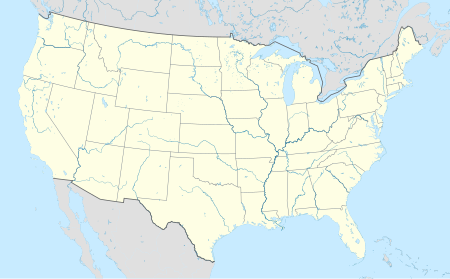
The 1975 NCAA Division I Basketball Tournament involved 32 schools playing in single-elimination play to determine the national champion of men's NCAA Division I college basketball. It began on March 15, 1975, and ended with the championship game on March 31 at the San Diego Sports Arena, now known as Pechanga Arena San Diego, in San Diego, California. A total of 36 games were played, including a third place game in each region and a national third place game. This was the first 32-team tournament.
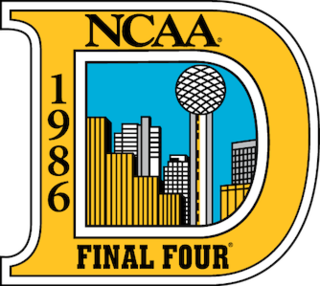
The 1986 NCAA Division I Men's Basketball Tournament involved 64 schools playing in single-elimination play to determine the national champion of men's NCAA Division I college basketball. It began on March 13, 1986, and ended with the championship game on March 31 in Dallas, Texas. A total of 63 games were played.
The 1970 NCAA University Division Basketball Tournament involved 25 schools playing in single-elimination play to determine the national champion of men's NCAA Division I college basketball. It began on March 7, 1970, and ended with the championship game on March 21 in College Park, Maryland. A total of 29 games were played, including a third place game in each region and a national third place game. This tournament was notable for the number of small schools that reached the Sweet 16, Elite 8, Final 4, and Championship Game. Another notable aspect of the tournament was that Marquette became the first team to turn down an announced NCAA Tournament bid for the National Invitation Tournament. Coach Al McGuire took issue with being seeded in the Midwest regional instead of the geographically closer Mideast. They were replaced in the field by Dayton. As a result of this action, the NCAA forbid its members from playing in other postseason tournaments if offered an NCAA bid.

The 1971 NCAA University Division Basketball Tournament involved 25 schools playing in single-elimination play to determine the national champion of men's NCAA Division I college basketball. It began on March 13, 1971, and ended with the championship game on March 27 in Houston, Texas. A total of 29 games were played, including a third place game in each region and a national third place game.

The 1972 NCAA University Division Basketball Tournament involved 25 schools playing in single-elimination play to determine the national champion of NCAA University Division college basketball. It began on Saturday, March 11, and ended with the championship game in Los Angeles on Saturday, March 25. A total of 29 games were played, including a third place game in each region and a national third place game.

The 1977 NCAA Division I Basketball Tournament involved 32 American schools playing in single-elimination play to determine the National Champion of Men's NCAA Division I college basketball. It began on Saturday, March 12, 1977, and ended with the championship game on Monday, March 28 in Atlanta. A total of 32 games were played, including a national third place game. This was the final tournament in which teams were not seeded.
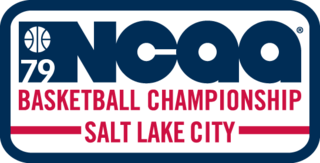
The 1979 NCAA Division I Basketball Tournament involved 40 schools playing in single-elimination play to determine the national champion of men's NCAA Division I college basketball. It began on March 9 and ended with the championship game on March 26 in Salt Lake City. A total of 40 games were played, including a national third-place game. This was the tournament's only edition with forty teams; the previous year's had 32, and it expanded to 48 in 1980. The 1979 Indiana State team was the most recent squad to reach a national title game with an undefeated record, holding that distinction for 42 years until the 2021 Gonzaga Bulldogs team won a 93-90 OT national semifinal over UCLA to reach the 2021 title contest vs. Baylor with a 31-0 record.

The 1980 NCAA Division I Basketball Tournament involved 48 schools playing in single-elimination play to determine the national champion of men's NCAA Division I college basketball. It began on March 6th, 1980, and ended with the championship game on March 24th at Market Square Arena in Indianapolis. A total of 48 games were played, including a national third-place game.
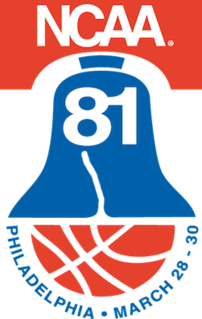
The 1981 NCAA Division I Basketball Tournament involved 48 schools playing in single-elimination play to determine the national champion of men's NCAA Division I college basketball. It began on March 12, 1981, and ended with the championship game on March 30 in Philadelphia. A total of 48 games were played, including a national third place game. It was also the last tournament to be televised on NBC, before CBS took over the following year. Additionally, it was the last season in which the NCAA sponsored championships only in men's sports; the first Division I Women's Tournament would be played the following year.

The 1983 NCAA Division I Men's Basketball Tournament involved 52 schools playing in single-elimination play to determine the national champion of men's NCAA Division I college basketball. It began on March 17, 1983, and ended with the championship game on April 4 at The Pit, then officially known as University Arena, on the campus of the University of New Mexico in Albuquerque. A total of 51 games were played.
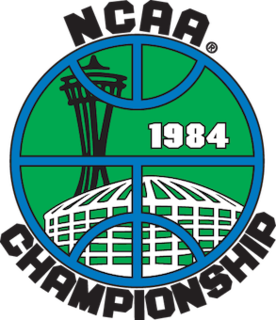
The 1984 NCAA Division I Men's Basketball Tournament involved 53 schools playing in single-elimination play to determine the national champion of men's NCAA Division I college basketball. It began on March 13, 1984, and ended with the championship game on April 2 in Seattle. A total of 52 games were played. This was the last tournament in which some teams earned first-round byes as the field expanded to 64 teams beginning in the 1985 tournament when each team played in the first round. It was also the second year with a preliminary round; preliminary games would not be played again until 2001.

The 1985 NCAA Division I Men's Basketball Tournament involved 64 schools playing in single-elimination play to determine the national champion of men's NCAA Division I college basketball. This was the first year the field was expanded to 64 teams, from 53 in the previous year's tournament. It began on March 14, 1985, and ended with the championship game on April 1 in Lexington, Kentucky. A total of 63 games were played.

The 1988 NCAA Division I Men's Basketball Tournament involved 64 schools playing in single-elimination play to determine the national champion of men's NCAA Division I college basketball. The 50th annual edition of the tournament began on March 17, 1988, and ended with the championship game on April 4 returning to Kansas City, Missouri for the 10th time. A total of 63 games were played.

The 1994 NCAA Division I Men's Basketball Tournament involved 64 schools playing in single-elimination play to determine the national champion of men's NCAA Division I college basketball. It began on March 17, 1994, and ended with the championship game on April 4 in Charlotte, North Carolina, played at Charlotte Coliseum. A total of 63 games were played.

The 2001 NCAA Division I Men's Basketball Tournament involved 65 schools playing in single-elimination play to determine the national champion of men's NCAA Division I college basketball for the 2000–01 NCAA Division I men's basketball season. It began on March 13, 2001, with the play-in game, and ended with the championship game on April 2 in Minneapolis, at the Metrodome. A total of 64 games were played.

The Georgetown Hoyas men's basketball program represents Georgetown University in NCAA Division I men's intercollegiate basketball and the Big East Conference. Georgetown has competed in men's college basketball since 1907. The current head coach of the program is Patrick Ewing.

The 1981–82 Georgetown Hoyas men's basketball team represented Georgetown University in the 1981–82 NCAA Division I college basketball season. Led by tenth-year head coach John Thompson, it was the first season in which they played their home games at the Capital Centre in suburban Landover, Maryland, except for five games at McDonough Gymnasium on campus in Washington, D.C.
The 1981–82 NCAA Division I men's basketball season began on November 27, 1981, progressed through the regular season and conference tournaments, and concluded with the 1982 NCAA Men's Division I Basketball Tournament Championship Game on March 29, 1982, at the Louisiana Superdome in New Orleans, Louisiana. The North Carolina Tar Heels won their second NCAA national championship with a 63–62 victory over the Georgetown Hoyas.

The 1982 NCAA Division I Men's Basketball Championship Game took place on Monday, March 29, between the North Carolina Tar Heels and Georgetown Hoyas at the Louisiana Superdome in New Orleans, Louisiana. The match-up was the final one of the forty-fourth consecutive NCAA Tournament organized by the National Collegiate Athletic Association (NCAA) to crown a national champion for men's basketball at the Division I level.
The 1984 NCAA Division I Men's Basketball Championship Game was the finals of the 1984 NCAA Division I Men's Basketball Tournament and it determined the national champion for the 1983-84 NCAA Division I men's basketball season The 1984 National Title Game was played on April 2, 1984 at the Kingdome in Seattle, Washington. The 1984 National Title Game was played between the 1984 West Regional Champions, Georgetown and the 1984 Midwest Regional Champions, Houston.

